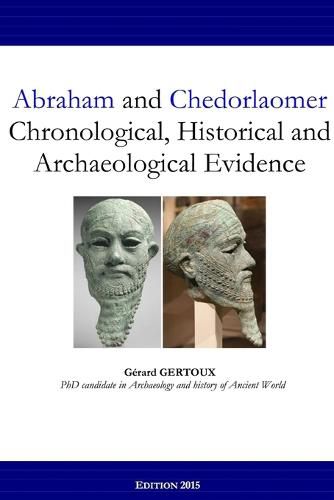Readings Newsletter
Become a Readings Member to make your shopping experience even easier.
Sign in or sign up for free!
You’re not far away from qualifying for FREE standard shipping within Australia
You’ve qualified for FREE standard shipping within Australia
The cart is loading…






This title is printed to order. This book may have been self-published. If so, we cannot guarantee the quality of the content. In the main most books will have gone through the editing process however some may not. We therefore suggest that you be aware of this before ordering this book. If in doubt check either the author or publisher’s details as we are unable to accept any returns unless they are faulty. Please contact us if you have any questions.
Historians consider the biblical account about Chedorlaomer's campaign against Sodom (1954 BCE) as a pious fiction. However, the Gospels refer to it as a real story (Heb 7:1) and a chronological reconstruction based on synchronisms shows that, among dynasties from Sumerian lists, the 3rd and last Elamite king of the Awan I dynasty was Kudur-Lagamar (1990-1954). The Spartoli tablets (c. 650 BCE) describe this famous attack of Babylonia by a coalition of evil kings named Kudur-KUKUmal, king of Elam, Tudhula, king of Gutium, and Eri-Aku [king of Larsa]. The route of Chedorlaomer and the description of his actions show that this king came to this region near Egypt in order to maintain control over this new land trade route. This ambitious project had to have worried Amenemhat I because southern Canaan was a big source of supply. In order to protect Egypt, Amenemhat I built the "Walls of the Ruler". One can notice that the area of Sodom was called Sutu[m] in execration texts (then Moab after 1800 BCE).
$9.00 standard shipping within Australia
FREE standard shipping within Australia for orders over $100.00
Express & International shipping calculated at checkout
This title is printed to order. This book may have been self-published. If so, we cannot guarantee the quality of the content. In the main most books will have gone through the editing process however some may not. We therefore suggest that you be aware of this before ordering this book. If in doubt check either the author or publisher’s details as we are unable to accept any returns unless they are faulty. Please contact us if you have any questions.
Historians consider the biblical account about Chedorlaomer's campaign against Sodom (1954 BCE) as a pious fiction. However, the Gospels refer to it as a real story (Heb 7:1) and a chronological reconstruction based on synchronisms shows that, among dynasties from Sumerian lists, the 3rd and last Elamite king of the Awan I dynasty was Kudur-Lagamar (1990-1954). The Spartoli tablets (c. 650 BCE) describe this famous attack of Babylonia by a coalition of evil kings named Kudur-KUKUmal, king of Elam, Tudhula, king of Gutium, and Eri-Aku [king of Larsa]. The route of Chedorlaomer and the description of his actions show that this king came to this region near Egypt in order to maintain control over this new land trade route. This ambitious project had to have worried Amenemhat I because southern Canaan was a big source of supply. In order to protect Egypt, Amenemhat I built the "Walls of the Ruler". One can notice that the area of Sodom was called Sutu[m] in execration texts (then Moab after 1800 BCE).